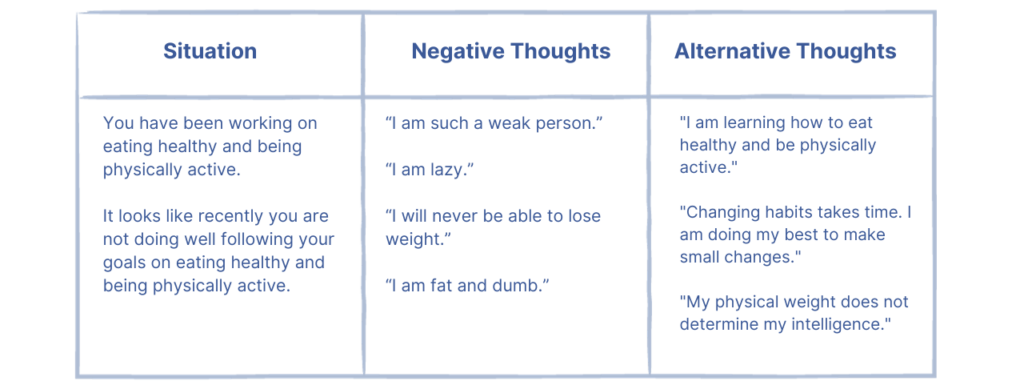Have you ever found yourself in a negative thought spiral and couldn’t seem to find a way out? Maybe something recently happened, and you can’t seem to get your mind off it. Negative thoughts can have a significant impact on our mood and overall well-being. For this reason, we need to spend some time learning the connection between thoughts and emotions, and how to change our negative thought patterns. In this blog post, we will explore just that.
Understanding the Connection between Thoughts and Emotions
Our thoughts are powerful; they shape our beliefs, attitudes, and behaviors. Therefore, it’s no surprise that they also have a significant impact on our emotions. Negative thoughts such as “I’m not good enough” or “I’ll never be successful” can lead to feelings of depression, anxiety, or hopelessness. On the other hand, uplifting thoughts such as “I am capable” or “I am enough” can boost our self-esteem and improve mood.
But what does the research really tell us about the relationship between our thoughts and emotions? It turns out there is substantial psychological evidence reinforcing this connection. Cognitive Behavioral Therapy (CBT), for example, is a well-established psychological treatment that has been proven effective for a range of problems, including depression, anxiety, and more. It’s based on the concept that changing unhelpful thinking leads to a change in affect and behavior.
Remember the time you convinced yourself that a task was too difficult, and suddenly, it felt impossible to even start? That’s your thoughts directly influencing your emotions and actions. Studies suggest that by identifying these negative thought patterns, we can challenge and alter them to reduce emotional distress and encourage more helpful behavior. It’s not just about replacing an “unhelpful” thought with a “helpful” one; it’s understanding why we think the way we do and how it affects our emotional state. Does this sound familiar to you? Have you ever caught yourself in a similar scenario? It’s okay if you have; it’s a common experience, and recognizing it is the first step towards change.
Recognizing Negative Thought Patterns
The first step in changing negative thought patterns is recognizing them when they occur. Negative thoughts can be automatic and habitual, making them difficult to identify at times. However, paying attention to physical sensations such as tension in your body or changes in your breathing can help you recognize when negative thinking is occurring. Also, when noticing a mood shift, consider asking yourself the following questions:
- What was I thinking a few minutes ago?
- What am I thinking right now?
- Is there something bothering me at the moment?
- What am I experiencing in my body?
Taking the time to reflect on these questions should allow you to become conscious of your thoughts affecting your mood. For example, journaling your thoughts can help with identifying patterns. It gives you the chance to revisit your journal entries and see patterns of unhelpful thinking.
How To Challeng Negative Thoughts
Once you have recognized negative thought patterns, the next step is challenging them with evidence-based reasoning. For example, if you’re feeling anxious about an upcoming presentation at work and thinking that you’ll fail miserably, challenge that thought by asking yourself what evidence supports it. Is there any evidence that contradicts it? Often, we find that there is little factual basis for our negative thoughts.
Coming up with alternative possible outcomes has the power to rewire our automatic thinking and perception of a situation. If your default thought process is “I am incompetent,” consider seeking alternative explanations to a past incident. Let’s say you failed miserably in a presentation once. Consider thinking of alternative explanations for the incident. Ask yourself, why am I blaming my brain for one incident, when it has served me well in all other situations? By introducing alternative stories, we also invite compassion and patience with ourselves.
How to Reframe Negative Thoughts
In addition to challenging negative thoughts with evidence-based reasoning, reframing them into more positive ones can also be helpful. For example, instead of thinking “I can’t do this,” try reframing it as “This is a challenge, but I am capable of overcoming it.” Reframing negative thoughts into more positive ones can help shift your mindset and improve your mood. In the reframing technique, we are learning better ways of speaking to ourselves with compassion and patience. Take a look at the below example of reframing and see if you can apply it to your situation.

Practicing Gratitude
Practicing gratitude is another way to change negative thought patterns and improve mood. Focusing on what you’re grateful for can help shift your attention away from negative thoughts and onto positive ones. Take time each day to reflect on things you’re thankful for, whether big or small.
When to Ask for Help
At times, you may find yourself employing all these techniques and yet still wonder why reframing certain negative thoughts remains challenging. It’s important to recognize that some thoughts are deeply rooted in our childhood experiences, leaving us with frozen memories of the past. In such situations, seeking professional help to process and heal from these childhood wounds becomes crucial. There is no shame in taking the time to reflect and heal from our past, and therapy can provide the relief and support needed for this journey.
For instance, if you find that persistent negative thoughts or emotions are significantly impacting your daily life, it might be time to reach out for professional help. Similarly, if these challenges start affecting your relationships, work, or overall well-being, it’s important to consider the support and guidance that professionals can provide. These signs indicate that seeking professional help could be the empowering step towards healing and self-care.
Share Post:
Start your therapy journey today.
Schedule a 15-Minute Free Consultation With Our Intake Coordinator.




